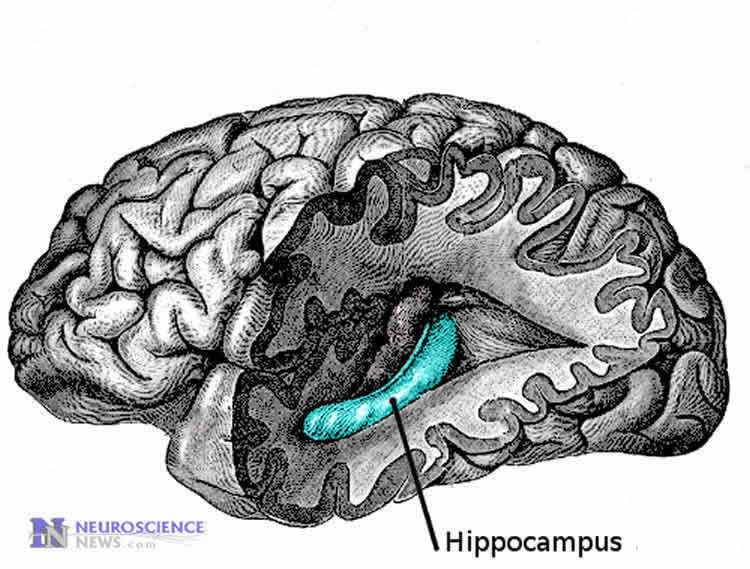Summary: Researchers discover the protein CRTC1 can help enhance memory by controlling gene expression.
Source: Rutgers University.
Rutgers University scientists have discovered a molecular pathway in the brain that may help provide answers to long-term memory problems in the elderly and aid researchers in identifying drug-based therapies to prevent dementia.
“Memory decline brings much suffering to the affected individuals and their families and leads to staggering social and economic costs,” said Gleb Shumyatsky, an associate professor in the Department of Genetics in the School of Arts and Sciences, who co-authored the study with former postdoctoral researcher Shusaku Uchida. “This work may provide scientists with answers and therapeutic help in the future for those going through normal aging or suffering from dementia.”
The research published on January 10 in Cell Reports focuses on the signaling pathways in the hippocampus, the area of the brain where learning and memory takes place. The scientists looked at how information is transmitted from the synapses – the point where neurons connect and communicate with each other – to the nuclei in the hippocampal neuronal cells.
Using laboratory mice, researchers found that a protein (CRTC1) enhances memory by controlling gene expression – a process that allows a cell to respond to a changing environment within the body and acts as both an on and off switch that controls when proteins are made and the levels at which they are released.
“There is a potential that this could help with memory in the human brain,” said Shumyatsky. “We found that the longer the CRTC1 stays in the mouse brain, the stronger the memory.”
Using two behavioral paradigms – fear conditioning and object location learning – Rutgers scientists found that the mice that received a longer period of training expressed a higher activity of the CTRC1 protein, had more robust and stronger gene transcription and exhibited better long-term memory.
The research also discovered that the CRTC1 protein activates the (FGF1) gene that controls essential brain cell functions, growth and survival and is important for tissue maintenance, repair and regeneration. This activation also linked the intensity of learning to enhanced memory strength.
Although memory decline is part of the normal aging process, it manifests more severely in those with neurodegenerative diseases like Alzheimer’s. This, in part, is due to a breakdown of the brain’s communication networks that are critical for cognitive function.

The Rutgers study is important to the research being done into age-related memory loss and neurodegenerative diseases like Alzheimer’s because no consistent biological deficits have been identified as a target for the treatment. Scientists like Shumyatsky believe that understanding the molecular pathways in the brain will help find better treatments for humans.
“The memory process is very much the same in both human and mouse brains,” said Shumyatsky “Our group has been unraveling molecular mechanisms that maintain and improve memory, and what our research tells us is that there are different answers to controlling and improving memory.”
Source: Robin Lally – Rutgers University
Image Source: NeuroscienceNews.com image is in the public domain.
Original Research: Full open access research for “CRTC1 Nuclear Translocation Following Learning Modulates Memory Strength via Exchange of Chromatin Remodeling Complexes on the Fgf1 Gene” by Shusaku Uchida, Brett J.W. Teubner, Charles Hevi, Kumiko Hara, Ayumi Kobayashi, Rutu M. Dave, Tatsushi Shintaku, Pattaporn Jaikhan, Hirotaka Yamagata, Takayoshi Suzuki, Yoshifumi Watanabe, Stanislav S. Zakharenko, and Gleb P. Shumyatsky in Cell Reports. Published online January 10 2017 doi:10.1016/j.celrep.2016.12.052
[cbtabs][cbtab title=”MLA”]Rutgers University “Protein in Brain Pathway Enhances Memory and Could Be Dementia Treatment Target.” NeuroscienceNews. NeuroscienceNews, 11 January 2017.
<https://neurosciencenews.com/memory-protein-dementia-5922/>.[/cbtab][cbtab title=”APA”]Rutgers University (2017, January 11). Protein in Brain Pathway Enhances Memory and Could Be Dementia Treatment Target. NeuroscienceNew. Retrieved January 11, 2017 from https://neurosciencenews.com/memory-protein-dementia-5922/[/cbtab][cbtab title=”Chicago”]Rutgers University “Protein in Brain Pathway Enhances Memory and Could Be Dementia Treatment Target.” https://neurosciencenews.com/memory-protein-dementia-5922/ (accessed January 11, 2017).[/cbtab][/cbtabs]
Abstract
CRTC1 Nuclear Translocation Following Learning Modulates Memory Strength via Exchange of Chromatin Remodeling Complexes on the Fgf1 Gene
Highlights
•Neuronal stimulation and learning induce Fgf1b in the mouse hippocampus
•FGF1 is essential for enduring long-term potentiation and memory enhancement
•Learning-induced nuclear transport of CRTC1 activates Fgf1b transcription
•CRTC1-mediated substitution of KAT5 for CBP on the Fgf1b promoter enhances memory
Summary
Memory is formed by synapse-to-nucleus communication that leads to regulation of gene transcription, but the identity and organizational logic of signaling pathways involved in this communication remain unclear. Here we find that the transcription cofactor CRTC1 is a critical determinant of sustained gene transcription and memory strength in the hippocampus. Following associative learning, synaptically localized CRTC1 is translocated to the nucleus and regulates Fgf1b transcription in an activity-dependent manner. After both weak and strong training, the HDAC3-N-CoR corepressor complex leaves the Fgf1b promoter and a complex involving the translocated CRTC1, phosphorylated CREB, and histone acetyltransferase CBP induces transient transcription. Strong training later substitutes KAT5 for CBP, a process that is dependent on CRTC1, but not on CREB phosphorylation. This in turn leads to long-lasting Fgf1b transcription and memory enhancement. Thus, memory strength relies on activity-dependent changes in chromatin and temporal regulation of gene transcription on specific CREB/CRTC1 gene targets.
“CRTC1 Nuclear Translocation Following Learning Modulates Memory Strength via Exchange of Chromatin Remodeling Complexes on the Fgf1 Gene” by Shusaku Uchida, Brett J.W. Teubner, Charles Hevi, Kumiko Hara, Ayumi Kobayashi, Rutu M. Dave, Tatsushi Shintaku, Pattaporn Jaikhan, Hirotaka Yamagata, Takayoshi Suzuki, Yoshifumi Watanabe, Stanislav S. Zakharenko, and Gleb P. Shumyatsky in Cell Reports. Published online January 10 2017 doi:10.1016/j.celrep.2016.12.052






